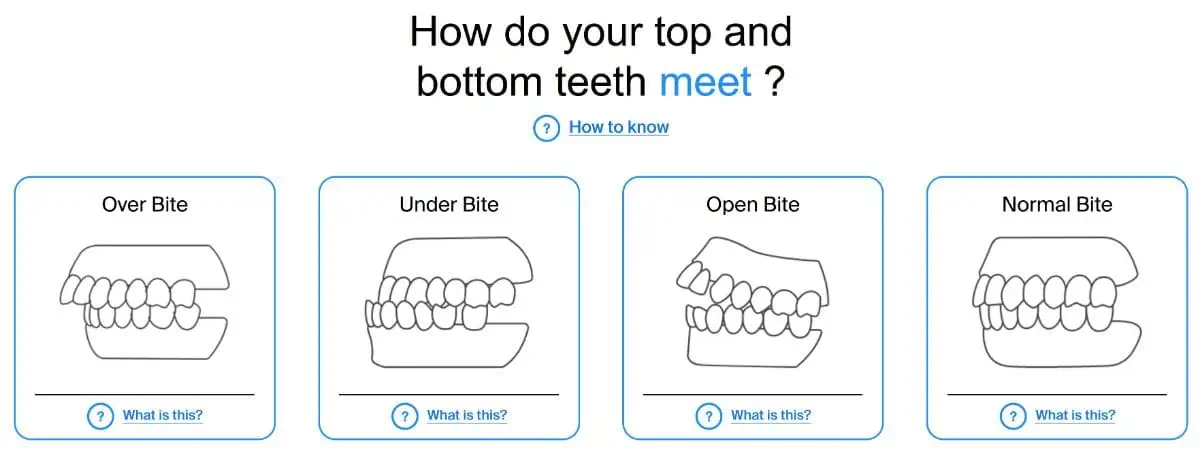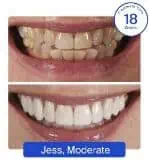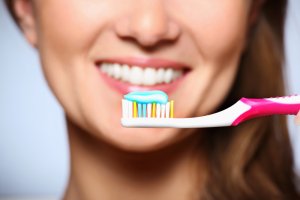Have you ever heard of twin block braces? Not many people have, but if you have an excessive overbite (protrusion of the anterior teeth) they may be your best option. You may have guessed by the name that they are one of the many different kinds of dental braces out there, but how do they work and are they right for you?
If your jaw is misaligned then there is some likelihood that your dentist or orthodontist may suggest a functional brace, like a twin block appliance. This article will discuss exactly what twin block braces are, how they can help correct your bite, and discuss the following topics.
- What is a functional brace?
- Treatment time and how much do you have to wear them?
- How long does it take to adjust to wearing them?
- Cleaning your twin block appliance
- How much does this orthodontic appliance cost?
We want to make sure you have all the information you need to make an informed decision about your orthodontic treatment. So, keep reading to find about more about these braces and what to expect if you get them.
Twin block braces cost between £500 and £900 and are used to cure an excessive overbite.
If your overbite is not that severe, and you have misaligned teeth, SmileWhite aligners could also be a possible choice.
Simply book a FREE e-consultation to find out whether these invisible braces are an option for you. As a bonus, you’ll get free retainers and whitening to complete your perfect smile.
Use our discount code “DENTALY5OFF” to save an additional 5% on your treatment.
In This Article
What is a functional appliance?

A functional brace is an orthodontic appliance made from plastic that is commonly used to correct a malocclusion. They can be fixed or removable braces that will help align your smile and correct your bite.
Most orthodontic appliances comprise two parts that are designed to interact with one another. Generally, the upper and lower appliances work together to stop you from closing your jaws in the incorrect position, and guide your lower jaw to a new position to correct your malocclusion.
They are most commonly used with children whose jaws are still growing, as they can aid the jaw in growing into the correct position. However, adults can also be treated with an orthodontic appliance if necessary. Both adults and children will need to wear fixed braces to continue treatment after wearing a corrective orthodontic appliance.
If you are wondering, how old do you have to be to get braces, or if you need braces treatment, read our dedicated articles, or consult your dentist or orthodontist.

What are twin block braces?
Twin block braces are a type of functional appliance that is removable. They will gradually straighten your teeth and align your bite by working on both the upper and lower jaws at the same time. The appliance is made up of two removable braces that must be worn together so that they can work correctly.
How does the twin block appliance work?
The twin block appliance works by persuading the lower jaw to sit further forward. When both the upper and lower braces are worn, your jaws will only close in the desired position. Over time, this constant pressure should gradually align your bite and encourage your jaw to grow into that position naturally.
The twin blocks only fit together in a certain position so that your lower jaw is sat slightly forward encouraging it into a better position. Orthodontist Dr Gareth Williams explains how twin block braces work in the following video:
How long is the treatment time for twin block braces?
The treatment time with twin block braces shouldn’t last any longer than 12 months. They will then usually be followed by an additional braces treatment time of between 18 and 24 months with fixed braces.
If you opt for private treatment then you will have the option of metal, ceramic or self-ligating braces after your orthodontic appliance has corrected your bite.
How long does it take to adjust to wearing twin blocks?
Although twin block braces are removable, you should aim to wear them most of the time you are awake. This will not only help you adjust to them faster, but it will also ensure your treatment gets the best results possible.
At first, you may find it hard to talk, and it will feel awkward to eat and drink. But, if you practice eating, drinking, talking and swallowing it will help you get used to them much faster.
Twin block braces are a little bit uncomfortable to begin with, but they shouldn’t be painful. It should only take you a few days to adjust to wearing them, but if it takes longer speak with your dentist or orthodontist.
To help with any discomfort you can take simple over-the-counter pain relief. However, make sure you read the instructions to ensure you have the correct dosage first.

When can you remove your braces?
Although you need to wear your twin block braces as much as possible, there are times when you should remove your braces. These include when you need to clean your teeth and appliances, playing a woodwind or brass instrument, swimming, or when playing contact sports.
Some might assume that you should take them out when eating, but it is actually better to get used to eating with them.
When you remove your twin blocks you should do so carefully to avoid breaking them. To remove them properly, remove the top brace first by pushing down on the back clips. Then remove the bottom brace by pushing up on the back clips. When you are not wearing your twin block braces they should be kept safely in their protective box.

- Treats up to 90% of Cases
- Up to 40% cheaper than Invisalign
- Buy now, pay later in interest-free instalments
- Rated 4.9/5 on Trustpilot
- As seen on 5, BBC, 4, DailyExpress, TheMail
- Get 5% OFF with our discount code DENTALY5OFF and FREE Whitening and Retainers worth £790
How do you take care of your twin blocks appliance?
Your treatment will have the best results if you take good care of your twin block brace. That means cleaning your appliance and teeth regularly, and removing your twin block brace when appropriate.
You can also avoid damaging your appliance by not eating certain foods such as:
- Sugary snacks and drinks between meals
- Fizzy drinks
- Chewy or hard sweets
- Hard foods such as apples or carrots
Make sure to be very careful with your appliance because if you break it you will have to pay for a replacement.

How to clean your twin block braces
Twin block braces are easily cleaned because they are removable. So, when you are brushing your teeth, just take a separate soft toothbrush and soap and gently brush your appliances to clean them. Avoid using hot water.
Use a retainer cleaning solution twice weekly to properly soak your appliance, and make sure to rinse it well afterwards. It is also a good idea to rinse it after you eat so that food particles don’t get stuck.
How much do twin block braces cost?
Twin block braces cost on average between £500 and £900. However, you will need to consider the cost of continuing your treatment with fixed braces on top of that.
It is not easy to meet the criteria for braces on the NHS, and not many people do. If you think you or your child would benefit from twin block braces, make an appointment with your NHS dentist to check eligibility.
Conclusion
If you are suffering from malocclusion with projection of the upper anterior teeth, then twin block braces may be the best solution to align your jaws and teeth. The two removable braces fit together to persuade your lower jaw to sit further forward.
This will help to correct your bite, which will in turn help to begin the process of straightening your teeth and changing your facial profile.
To get the best results you must wear your twin blocks as much as possible, only removing them for contact sports, swimming and in some cases when playing a musical instrument.
Taking care of your functional appliance is also important. Make sure you remember to brush it twice daily when you clean your own teeth with a toothbrush and warm water. Soaking your braces in special cleaning solutions can also help to keep them clean.
This is the first step in a long process to straightening your teeth, but you should easily get used to them in no time at all.
Keep in mind that before getting any orthodontic treatment, visit your dentist or orthodontist for a consultation to determine your suitability for treatment. Your dentist should also check for any cavities, gum disease, or other conditions that should be addressed before starting any treatment.
NHS. Orthodontic treatments. Consulted 3rd September 2021.




